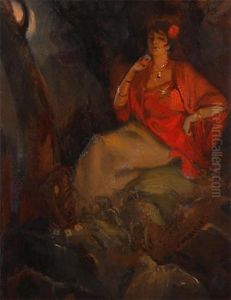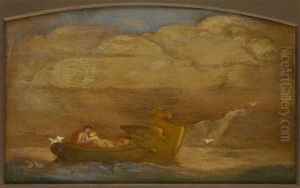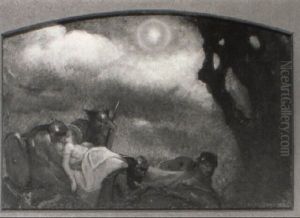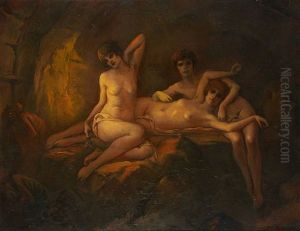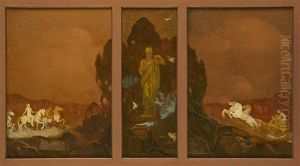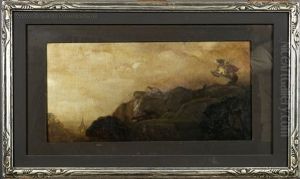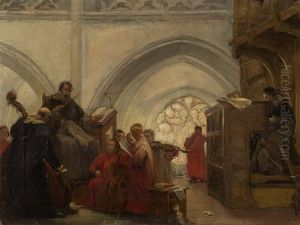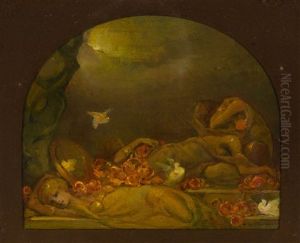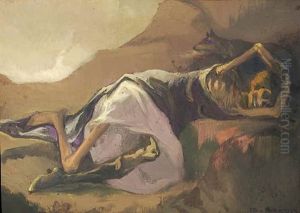Jan Frans De Boever Paintings
Jan Frans De Boever was a Belgian painter, illustrator, and decorative artist known for his often dark, fantastical, and somewhat macabre works. Born on November 9, 1872, in Ghent, Belgium, De Boever developed an interest in art at a young age. He was educated at the Royal Academy of Fine Arts in Ghent, where he refined his skills in painting and drawing. His early work was influenced by Symbolism, a movement that sought to express the more mystical and otherworldly aspects of human experience.
De Boever's art often explored themes of death, eroticism, and the dreamlike intersections of the conscious and subconscious. His paintings are characterized by a meticulous technique and a rich, moody palette, evoking the works of earlier Symbolist painters like Gustave Moreau and Fernand Khnopff. De Boever was skilled in various media, including oil painting, watercolor, and drawing. He is also noted for his illustrations of literary works, including those of Edgar Allan Poe, which helped to visually define the macabre and the mysterious for Belgian audiences.
Throughout his career, De Boever remained relatively removed from the mainstream art movements of his time, such as Impressionism and later, Modernism. Instead, he delved deeper into his own unique vision, which often involved elaborate compositions filled with allegory and surreal elements. Despite his distance from the avant-garde, he enjoyed a measure of success and was able to exhibit his works in Belgium and abroad.
Jan Frans De Boever's work fell into relative obscurity after his death on February 26, 1949. However, he is still remembered and appreciated by connoisseurs of Symbolist art and those with an interest in the fin de siècle period. His works can be found in private collections and museums, and they continue to attract attention for their haunting beauty and technical precision.



